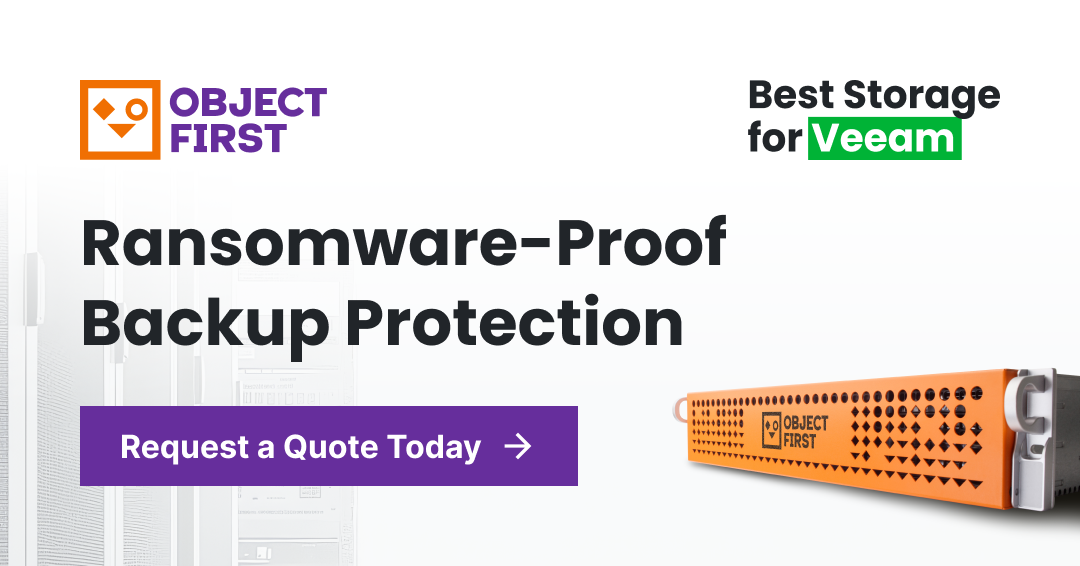Continuous data protection: The time machine for your data
Say you lost something. Now, imagine a time machine that lets you go back and lift that thing from the last place you still had it in. Continuous data protection (CDP) is a process that allows businesses to do the same with data.
Organizations can immensely benefit from continuous data protection because it enables instantaneous recovery of any data from any point in time without the limitations of backup windows or recovery point objectives. This article explains continuous data protection, how it works, its pros and cons, and how it compares to traditional backups.
What is continuous data protection (CDP)?
Continuous data protection (CDP), alternatively called continuous backup, is a type of backup that makes a copy of every change in data at the exact moment it occurs. With CDP in place, organizations don’t have to worry about backup windows or recovery point objectives because backup is being done instantly, on the fly. Like a methodical archivist, CDP is always watching and noting everything in your system. Given such a detailed record, you can quickly and effortlessly undo any damage and get back to the point when everything worked perfectly.
Suppose a mission-critical file gets corrupted or infected with malware. Traditionally, you would need to roll back an entire backup to restore the file to its functioning state. With continuous backup, you can target and restore that file without performing a full recovery.
How does continuous data protection work?
Continuous data protection records every change made to the system it oversees. Every such change, however small, receives a timestamp. Organizations can use CDP to bring single data points back from before they were modified or even erased. For example, if a junior deletes a table in production on Friday at 3 pm, CDP can restore it to what it was at 2:59 pm.
Continuous data protection is a bit like Google Docs. By default, Google Docs tracks every edit in a document. If a cat steps on the keyboard, deletes something randomly, and spills coffee on your laptop, you can still salvage your work on a different machine. All it takes is clicking “History,” expanding the list of changes, and locating the one saved just before the fateful mishap.
What are the pros and cons of CDP backup?
Continuous backup makes it possible to rewind your data to any point in time. This way, you can’t go wrong because there’s always a “quick save” from a second before. Sounds like a dream, right? There must be a catch. And there is. To provide a comprehensive overview of the technology, this section delves into the pros and cons of continuous data protection so you can decide if it is right for you.
The advantages of continuous data protection
- Absolute recall. CDP “remembers” every little thing that happens in your system and can “teleport” you back to anywhere in the timeline.
- Disaster recovery. Modern CDP instances support instant recovery from virtual machines, whereby workloads are run directly from backup copies, which minimizes downtime in case of an incident.
- Ransomware protection. Should you fall victim to ransomware, continuous backup protection gives you an “undo button,” transferring you back to the last point in time before encryption.
- Complete changelog. CDP keeps a detailed log of every event in the system, enabling you to see what exactly changed and when. This “x-ray vision” streamlines audits and accelerates security incident investigations.
- Version control. In addition, CDP gives you insight into multiple versions of the same data point, much like the edit history in Google Docs.
- No backup window. CPD completely obviates the need for a backup window because it always registers everything, even while production works in full swing.
- Zero RPO. In its most strict form, CDP drives your recovery point objective (RPO) down to zero, which means you never risk losing any data. This advantage, however, comes with a caveat that we’ll explore in the FAQ below.
- Scalability. Because CDP is disk-based, it supports horizontal scalability. If you run into a wall with storage, there’s no need to upgrade anything. Instead, just add another node or two.
- Speed. Disk storage works non-linearly, which expedites data retrieval and increases uptime during recovery. Especially object storage has been designed with large data volumes in mind and is recommended for backups, including continuous data protection.
The disadvantages of continuous data protection
- Single point of failure. CDP may become the weakest link in an organization’s data infrastructure without high-availability deployment solutions.
- Storage cost. A successful implementation of CDP relies on disk storage, which is expensive and may be cost-prohibitive for some organizations.
- Throughput-intensive. CDP’s impressive speed in terms of ingest and recovery requires a broad enough bandwidth to accommodate the additional traffic. Remember that CPD works parallel to all the other processes, which it simultaneously copies, effectively doubling the strain every workload puts on the network.
Continuous data protection vs. traditional backup
CDP surpasses traditional backups in that it eliminates the backup window. A backup window denotes a period of time specifically allotted for performing traditional backups, usually at night when activity is low and the risk of disruption is minimal. Conversely, CDP can and does work without pause alongside other processes, which it backs up in real-time. Depending on how you look at it, you can either say the backup window under continuous data protection does not exist or remains permanently open.
Another way CDP outstrips traditional backup is in recovery point objective (RPO). RPO is the maximum amount of data that can be lost in an incident. It is determined by the difference between data stored in backup versus that in production. If the last backup copy is 12 hours old and you have already accumulated 10 hours’ worth of new data, that data is all gone should something terrible happen. CDP reduces RPO to zero, or almost zero, depending on its type (see FAQ), meaning you can never lose your data.
Ootbi - fast and immutable backup storage for continuous data protection
Ootbi (out-of-the-box immutability) is a disk-based immutable backup storage purpose-built for Veeam. It can marshal up to 120 VMs at once so that you can run workloads directly from backup while recovery is going on in the background. With its 4GB/s maximum ingest speed, Ootbi meets the requirements for continuous data protection because it can instantly write every change in production to backup. Utilizing object storage, which is non-linear and scales easily, Ootbi perfectly complements a robust continuous data protection strategy, making it fast, scalable, and ransomware-proof.
If you’re interested in using Ootbi for continuous data protection, book a demo with our experts. You’ll see it in action, marvel at the specs, admire the beautiful HTML5 UI, and discover how to leverage it all to make your CDP lift off.


